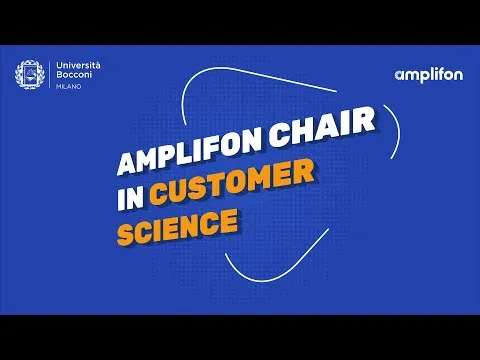
The Three Ingredients of Customer Science
The term "customer science" can sound misleadingly simple. On the one hand, some may think it is only a trendy way to say marketing, others that any observation of customer behavior can be considered customer science. Things are not only more complex, as often happens, but also more interesting, according to Gaia Rubera, Amplifon Chair in Customer Science at Bocconi.
"Customer science," she says in a video, "is the fusion of three ingredients: marketing, which is the understanding of customer, data - hopefully Big Data - and machine learning. The goal here is first of all to identify, measure, and systematically understand key customer phenomena, for instance, in-store customer experience."
Customer scientists need to systematically collect data about each transaction between each client and the firm. Then, they can move to study relationships between phenomena, and hopefully identify causal relationships between them.
"In order to do that," Professor Rubera says, "we need marketing theory, which we can test with the data and machine learning models."
The new kid on the block among customer science tools is audio analytics, i.e. the study of audio data. In the past years, there has been an explosion of research about textual and image data, due to their availability in social media posts, but attention to audio data is now on the rise.
"Right now, the main source of audio data is call center recordings", Prof. Rubera says. "We would like to analyze these recordings, and see whether we can identify some audio features, for instance the emotion distress in the client's voice, or how fast the operator and the client talk, how loud they talk, and whether these audio features can lead to a certain specific outcome, such as the satisfaction of the client with the call itself or, even more important, how the relationship between the client and the firm goes on."
Understanding Customer Science
